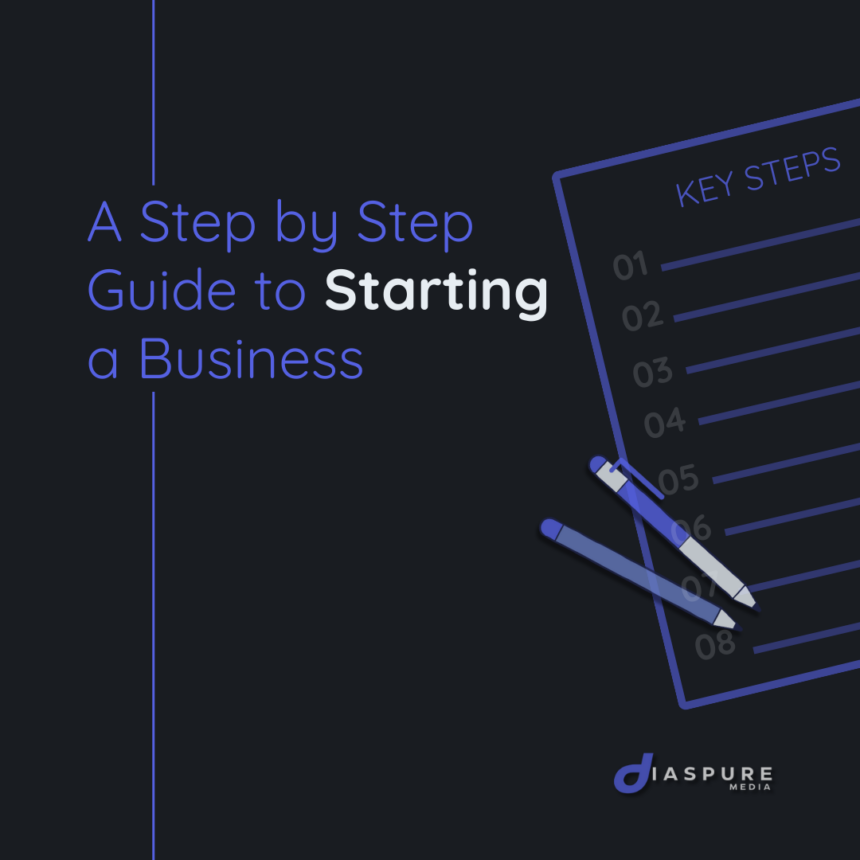Fantastic, you’re considering starting a business! This is an exciting endeavor which can also be a complex process. But don’t worry, you’re in the right place. In this blog post, we will provide you with a comprehensive step-by-step guide on how to start your business in the “Great White North”.
Step 1: Conduct Market Research
Before diving into the world of entrepreneurship, it’s essential to thoroughly understand your “market”. What is market you ask? A market is essentially people or organizations that want or need something that “others” are able to provide. “Others” in this case is you, the entrepreneur! The market also includes other entrepreneurs (your competition) and much more.
Your goal as an entrepreneur is to solve a problem or problems for your potential customers. To do a great job at that, you must first have a good understanding of who your customers are and what their needs and preferences are. Market research is the work you do to gather information about who your target customers are and what they need or want so that you can ensure that you invest your time wisely in building a business that enables everyone involved to win.
In addition to identifying your target customers, you also use market research to identify and study your competitors and discover industry trends. This knowledge will help you determine if there is a sustainable demand for your product or service and help you make strategic business decisions.
Step 2: Talk to your target market
A major part of market research is speaking with your target market. Find out from them what they need then develop your solution (your business idea) around that. Why? Well, you’re solving the customer’s problem after all, remember it’s necessary to learn from them what their needs are in order to accurately build a solution to their problem. If you build what “you” believe they need, there is a high possibility that they will not find it useful and will not buy your product or service.
To better understand your market you can engage with various online communities, speak directly to your target market, or conduct surveys, polls, quizzes, and organize focus groups to gain feedback from them.
Step 3: Find and build a great community around you
By this time you may be feeling overwhelmed and a little bit alone in your journey, and we understand it’s challenging, we promise you will be okay. Remember to cater to your needs while on your entrepreneurial journey. Make time for the people and things you love and monitor your mental and physical health.
Be sure to develop positive relationships with like-minded individuals because building a community of people who understand you will help you feel less alone, you can act as a support system for each other and learn from one another.
It’s a good idea to seek out entrepreneurial communities that offer opportunities for learning and networking with other founders. Remember that participating in programs and workshops that help you learn and grow as an entrepreneur is great for you, your business, and when you choose one, your team. Such communities are great for helping you with the next step in this guide. Also, be sure to give back to these communities too!
Communities like:
- Various business-focused organizations.
- Incubators are great for certain entrepreneurs in the idea stage. Learn more.
- Accelerators are great for those who have an MVP/prototype or have started their business. Learn more.
- Consider business-related online communities on Facebook and Meet-up.
Have a business idea or a new business? Check out our resource pages.
Step 4: Develop a business plan
A well-thought-out business plan is a roadmap for your entrepreneurial journey. It outlines your business goals, strategies, financial projections, and the resources required to achieve them. Having a solid business plan will not only guide you but may also show potential investors or lenders that you are serious and understand what you are doing. Discover a few reasons you should write a business plan.
Step 5: Seek out trusted business advisors
Who are these? As an entrepreneur, you have many amazing responsibilities, and to ensure you remain compliant with various laws, and regulations, protect yourself, your business, and more it’s a great idea to get trusted advisors to help yourself and your employees (when you get some) be happier in their positions and help your business be more successful in the long run. These trusted advisors include Lawyers, accountants financial advisers, insurance brokers, and bankers.
Get the [CHECKLIST] for New Entrepreneur’s Starting a Business in Canada.
Step 6: Choose a business structure
Selecting the business structure that is right for you is a crucial decision that will impact your business’s operations, liability, and more. In Canada, you can choose from various structures, including:
- Sole Proprietorship: You operate the business as an “individual” and assume all liabilities relating to the business.
- Partnership: You partner with one or more individuals to share responsibilities and profits.
- Corporation: Your business becomes a separate legal entity from its owners, offering limited liability protection.
Each structure has its pros and cons, so be sure to carefully consider which one aligns with your goals and needs.
To help you gain additional information about business structure, watch Ownr’s informative video.
Step 7: Register your business
Depending on the industry you operate in, your or your business’s location, as well as the name and business structure you choose, registration may be required to legally operate your business in Canada. Here are a few key steps to consider:
- Name Registration: Consider a unique business name and check its availability. Register it with the appropriate provincial or territorial authority. Depending on your needs, it’s also possible to register a simple numbered company.
- Business Number (BN): Getting a Business Number (BN) with the Canada Revenue Agency (CRA). This number is essential for taxation and other government dealings.
- Incorporate (if applicable): If you decide on a corporation, discuss filing Articles of Incorporation with the federal or provincial government with your legal representative.
Step 8: Get the necessary licenses and permits
To operate legally in Canada, certain businesses may require specific licenses and permits. The requirements can vary based on your industry, location, and the nature of your business. Contact your local government and check online resources like BizPal to help you determine the licenses and permits you may need.
Step 9: Prepare for taxes
Taxes are an essential part of participating in the economy. Ensure you conduct the necessary research, gather the necessary business advisors, and obtain the necessary information required to remit taxes to the necessary CRA – Federal, Provincial, or other governmental/regulatory bodies that apply to your unique circumstances. Throughout this process, be sure to consult with your authorized tax representative.
Step 10: Open a business bank account
Proper financial management is a major part of operating your business, and separating your personal and business finances is essential for tracking expenses and income accurately. Be sure to open a dedicated business bank account to manage your finances effectively. It also helps maintain professionalism in your financial dealings. You and your employees will be much happier for your diligence in managing the finances well.
Step 11: Secure funding
Depending on your business’s size and financial needs, you may require funding to get started.
Remember, no one will share their money with you if they believe you will throw it away. I know, it’s harsh but true. How much money did any adult give you when you were 3 years old? It’s important to prove yourself to be responsible when managing your and your business’s finances for anyone to be willing to consider investing in you and your idea.
Consider exploring various funding options such as:
- Grants: Find grants and subsidies that may be available for your industry.
- Investors: If your business has high growth potential, and you know of some investors or venture capitalists this may be a great option to consider.
- Business Loans: Find and apply for loans from banks or credit unions or other business focused organizations like Futurpreneur.
Step 12: Hire employees (if necessary)
If your business requires employees, be sure that you follow all employment laws and regulations in Canada. This includes payroll deductions, employment contracts, and workplace safety standards.
Starting a business in Canada can be a rewarding experience with the right planning and guidance. By following these steps, you’ll be well on your way to establishing a successful business in the Great White North. Remember that seeking advice from business professionals or consulting with experts can be invaluable as you navigate the process. Best wishes on your entrepreneurial journey!
Disclaimer:
Remember, in all that you do we wish you the best, however, the information provided on this site is intended for general informational purposes only and should not be considered professional advice. be sure to seek professional legal and financial counsel to cater to your specific situation. Learn more in our disclaimer policy.




